Hello! We found a very neat thing a few weeks ago:
It's a bird! It's a plane! It's-- wait, nope, it's a bird. The many small bones in the upper left-hand corner (with the big arrow pointing at them labeled "bird") are all from a small passerine, (or "perching bird"). These bones likely represent an associated individual; they were found in a slightly separate layer of asphaltic sand than the rest of the deposit, and some bones even appear to be somewhat articulated. In other words: this is the almost complete skeleton of a small bird; this is extremely rare; I have named him Kevin.
Though most birds are passerines, they are nevertheless rare at Rancho La Brea; our collections are dominated by bigger birds of prey like teratorns and condors. It's hard to say what species Kevin is, exactly -- especially without cleaning and preparing the bones first -- but Lab Supervisor Shelley says he's about the size of a scrubjay.
The bones in the numbered in this photo are as follows:
- carpometacarpus
- scapula
- 2 limb bones -- not sure which exactly
- sternum
- tibiotarsus? I think?
- tarsometatarsus
- femur?
...and a humerus (as well as an articulated synsacrum and femur, several vertebrae, and several phalanges that I don't currently have photos for). After removing these uppermost bones and discovering there were even more underneath we decided to remove the rest of the skeleton in one block...
which was accomplished by gently prying the layer of asphaltic sand it was rested in with well-placed screwdrivers and chisels.Though this skeleton is exciting in and of itself, its context may actually be more important. As regular blog readers may remember, up until now Deposit 1 has been more dirt than fossils. There's a dense cluster of bones in the southeast corner that has yielded at least 1000 specimens (and at least that many more to come), but about 3/4ths of the box has been largely sterile. Not anymore. As we dig deeper into the so-called "sterile" areas, we've found a new layer of fossils:
This is a different style of deposition than in the "main" bone cluster we've previously worked on:
- These fossils are spaced further apart, and spread out more evenly -- not all jumbled together like pick-up-sticks.
- These bones are broken, weathered, and worn. The bones in the other cluster are largely complete
- Many of the longer bones and bone fragments point in the same direction (scroll back up to the top of the page to get a closer look) -- perhaps implying stream movement? We don't know! But it's interesting...
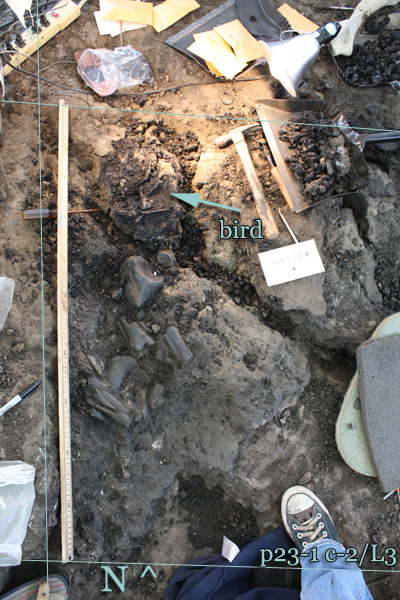

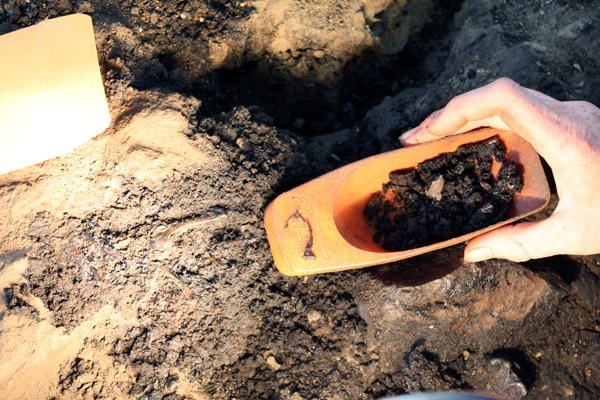
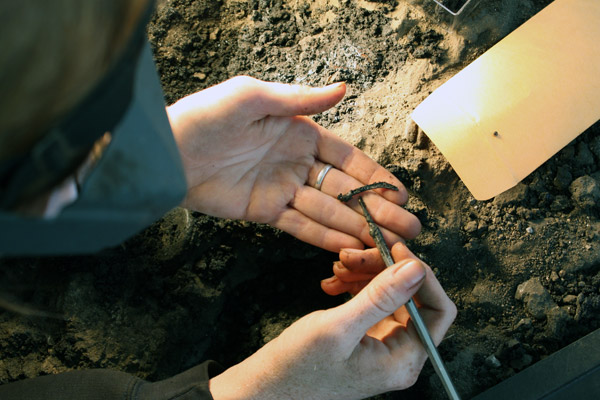

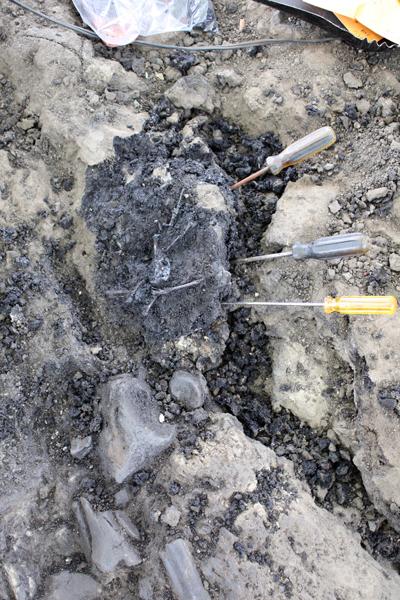
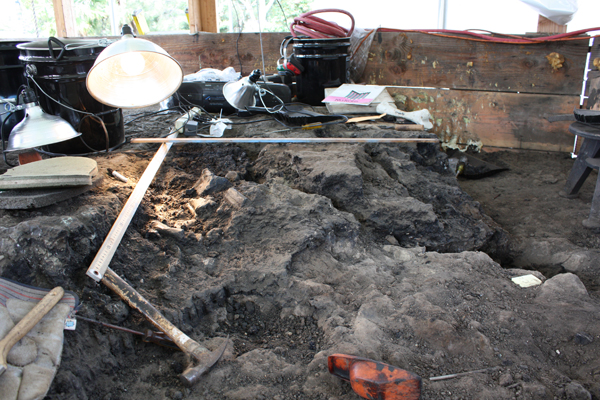



2 comments:
It's Andie's Associated Bird-Skel-Ton..
We hope you all enjoy the bone...
Andie's Associated Bird-Skel-Ton..
Sit back and let the Tar Pit grow.
Andie's Associated
Andie's Associated
Andie's Associated Bird-Skel-Ton..
Hey Andie, I know of a soon to be bird skeleton in pit 9, but I doubt whether the skull we be any good.
i love ur limerick ryan!
Post a Comment